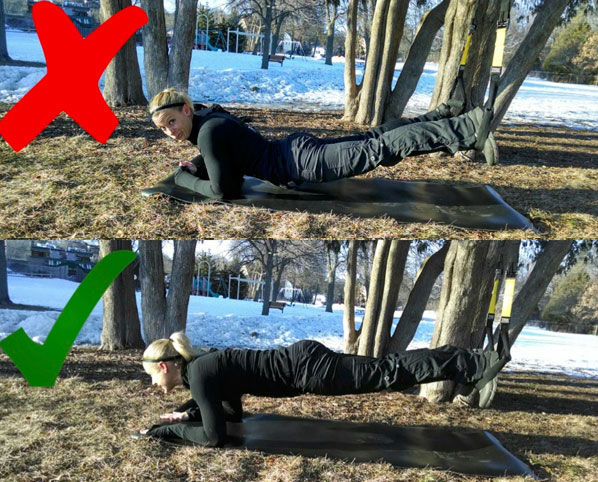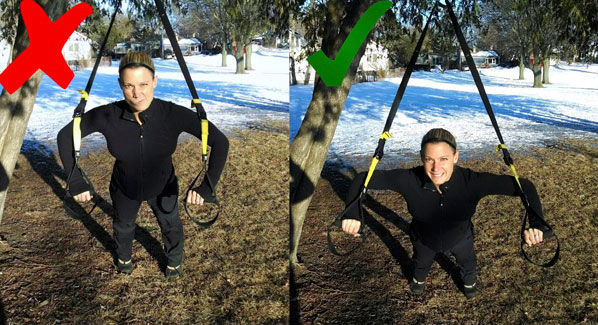They are present in almost every gym, athletic training center and studio around the world, but it is not uncommon to see many people using suspension trainers improperly. TRX is the leader in suspension-training education and we always encourage trainers and instructors to go through at least one of our qualification courses to not only learn a broad range of exercises, but also how to make suspension training safe and effective for all populations.
Quality of movement is what we strive for, which can deteriorate if somebody begins with an exercise they are not ready for, chooses a progression that is too advanced or pushes reps beyond failure. Avoid these four sins when working with your clients and teaching your classes, so everyone can safely reach their fitness goals!
1. Sagging

On occasion I hear people complain that suspension training hurts their lower back. One hundred percent of the time, when I have evaluated their form during exercise, the pain was caused by not maintaining a solid plank throughout movements. If the hips are allowed to sag while in suspension or during any other exercise, pressure will be placed on the lumbar spine, which will lead to back pain. If your client can’t keep his hips from sagging, instruct him to change his angle or increase his base of support to make the exercise easier.
2. Not starting in the correct position

Ensure your client is starting at an angle that is safe and doable for the exercise you have selected. Also, always begin shoulder exercises with an offset foot stance and at the end range of motion to maintain constant tension on the suspension trainer.
3. Scraping

When struggling for stability, some people lower the straps so that they rub on the arms. Not only is this a form of cheating, but it can also be quite painful. To avoid scraping the straps on the arms, have your client slightly lift the hands up. If this cannot be done without sacrificing form (see: sagging) then change the angle or base of support to make the exercise easier.
4. Sawing

This will lead to early wear and tear of your suspension trainer. To prevent the straps from sawing back and forth, have your client slow the movement down and put equal pressure into the foot cradles or handles.
If you’re interested in learning more about safe suspension training, check out the TRX education courses.
 by
by 








 by
by